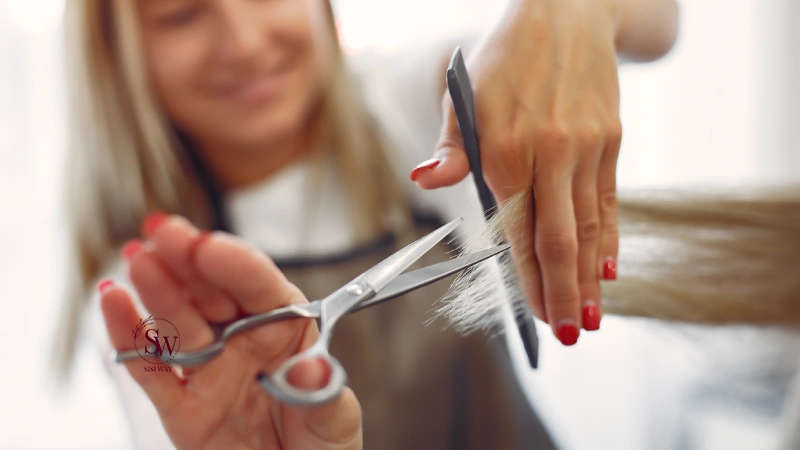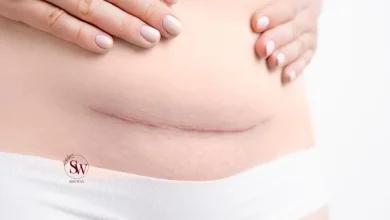
Having long, luscious locks is a dream for many. While genetics play a significant role in determining the speed at which your hair grows, there are several steps you can take to help it along. From dietary changes to proper hair care, here’s everything you need to know about how to make your hair grow faster.
Understanding the Hair Growth Cycle
Before diving into ways to accelerate hair growth, it’s essential to understand the hair growth cycle. Hair grows in three stages:
- Anagen Phase: This is the active growth phase, during which your hair can grow around half an inch per month. The length of this phase varies depending on genetics and can last anywhere from two to seven years.
- Catagen Phase: In this transitional phase, hair stops growing and detaches from the blood supply. This phase lasts for about two weeks.
- Telogen Phase: Also known as the resting phase, hair remains in the follicle but isn’t actively growing. After this phase, the hair falls out, and the cycle begins anew.
Tips for Faster Hair Growth

- Maintain a Healthy Diet: Eating a balanced diet rich in vitamins and minerals is crucial for hair growth. Include foods high in vitamins A, C, D, E, zinc, iron, and omega-3 fatty acids.
- Stay Hydrated: Drinking plenty of water is essential for overall health, including hair growth. Aim for at least eight glasses a day.
- Reduce Stress: Stress can lead to hair loss, so managing stress levels is crucial. Try relaxation techniques such as yoga, meditation, or deep breathing exercises.
- Avoid Heat Styling: Excessive heat from styling tools can damage hair and inhibit growth. Try to air dry your hair whenever possible and use heat protectant sprays when styling.
- Trim Regularly: While it may seem counterintuitive, regular trims can help prevent split ends, allowing your hair to grow longer and healthier.
- Use Gentle Hair Care Products: Harsh chemicals in some hair care products can damage your hair. Opt for gentle, sulfate-free shampoos and conditioners.
- Massage Your Scalp: Massaging your scalp increases blood flow to the hair follicles, promoting growth. Use your fingertips to massage your scalp for a few minutes daily.
- Consider Supplements: If you’re not getting enough vitamins and minerals from your diet, consider taking supplements specifically formulated for hair growth.
- Protect Your Hair: Wear a hat or use a scarf to protect your hair from the sun, wind, and harsh weather conditions.
What is a Good Hair Care Routine?
How Often Should You Oil Your Hair for Growth?

Oiling your hair can help nourish and moisturize it, promoting healthy growth. However, the frequency of oiling depends on your hair type and scalp condition. For most people, oiling 1-2 times a week is sufficient. If you have a dry scalp or hair, you may benefit from more frequent oiling, while those with oily hair may need to oil less frequently. Experiment to find the right balance for your hair.
What to Eat for Hair Growth
A balanced diet rich in essential vitamins and minerals is key to promoting hair growth. Here are some foods to include in your diet:
- Protein: Hair is made up of protein, so it’s essential to include an adequate amount in your diet. Good sources include lean meats, poultry, fish, eggs, dairy products, legumes, and nuts.
- Vitamin A: This vitamin helps produce sebum, which is essential for keeping hair healthy. Include foods rich in vitamin A, such as sweet potatoes, carrots, spinach, and kale.
- Vitamin C: Vitamin C is an antioxidant that helps protect hair follicles from damage. Citrus fruits, strawberries, bell peppers, and tomatoes are excellent sources of vitamin C.
- Vitamin E: Like vitamin C, vitamin E is an antioxidant that can help protect hair from oxidative stress. Include foods rich in vitamin E, such as almonds, sunflower seeds, and avocados.

- Omega-3 Fatty Acids: These healthy fats are essential for hair growth. Include sources of omega-3 fatty acids in your diet, such as fatty fish like salmon, walnuts, and flaxseeds.
- Iron: Iron is essential for hair growth and can be found in foods like red meat, poultry, lentils, and spinach. Vitamin C can help enhance iron absorption, so try to pair iron-rich foods with vitamin C-rich foods.
- Zinc: Zinc plays a role in hair tissue growth and repair. Include zinc-rich foods in your diet, such as oysters, beef, pumpkin seeds, and lentils.
- Biotin: Biotin is a B vitamin that is important for hair growth. Include biotin-rich foods in your diet, such as eggs, nuts, and whole grains.
When to Cut Your Hair for Growth

While it may seem counterintuitive, getting regular trims can help your hair grow faster in the long run. Here’s why:
- Prevents Split Ends: Split ends can travel up the hair shaft, causing more damage and breakage. By getting regular trims, you can prevent split ends and keep your hair healthy.
- Promotes Healthy Hair: Regular trims can help remove damaged and unhealthy hair, allowing new, healthy hair to grow in its place.
- Improves Hair Texture: Trimming your hair regularly can help improve its texture and make it appear thicker and fuller.
- Maintains Style: If you’re growing your hair out, regular trims can help maintain your style and keep your hair looking neat and well-maintained.
It’s generally recommended to get a trim every 6-8 weeks, but this can vary depending on your hair type and the condition of your hair. If you’re trying to grow your hair longer, you can extend the time between trims to every 10-12 weeks, but be sure to monitor the condition of your hair and trim it as needed to prevent split ends and breakage.
Frequently Asked Questions (FAQs)
- Can certain hairstyles promote hair growth?
While no hairstyle can directly promote hair growth, certain styles can help protect your hair and prevent breakage, allowing it to grow longer. Avoid tight hairstyles that pull on the hair follicles. - Are there any medical treatments for faster hair growth?
Yes, some medical treatments, such as minoxidil (Rogaine) and finasteride (Propecia), have been shown to promote hair growth. However, these treatments should only be used under the guidance of a healthcare professional. - How long does it take to see results from hair growth treatments?
Results vary depending on the treatment used and the individual’s response. In general, it may take several months to see noticeable results. - Can stress affect hair growth?
Yes, stress can lead to hair loss, a condition known as telogen effluvium. Managing stress through relaxation techniques and stress-reducing activities can help maintain healthy hair growth. - Are there any natural remedies for promoting hair growth?
Some natural remedies, such as coconut oil, castor oil, and onion juice, are believed to promote hair growth. While these remedies may help improve the condition of your hair, scientific evidence supporting their effectiveness is limited.
In conclusion, while you can’t change your hair’s natural growth rate, you can take steps to promote healthy hair growth. By maintaining a healthy diet, reducing stress, and taking care of your hair, you can help ensure that it grows as quickly and healthily as possible.



